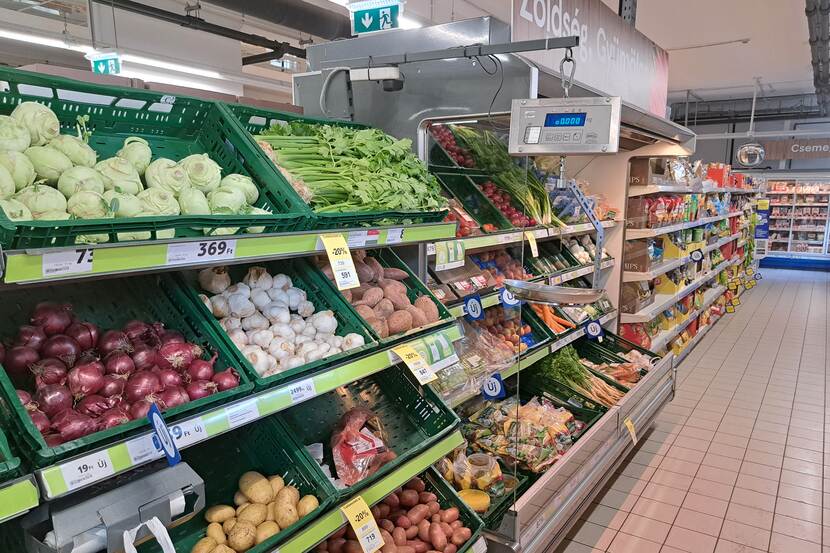Retail trade slows in Hungary by last quarter
Domestic retail turnover is down 6.5%; the producers of chestnut struggling; and figures show changing seafood market habits - Our weekly briefing on agriculture, food and nature news in Hungary.

Statistical Office: Retail trade down 6.5% y-o-y
The latest macroeconomic data from the Central Statistical Office shows that retail turnover fell by 6.5% since last year, and was also down 0.3% m-o-m, in October, 2023, reports TradeMagazin.hu. The sales volume in food and food-like mixed retail stores decreased by 1.9%. According to the adjusted data, the retail turnover volume decreased by 0.3% compared to the previous month. The volume of mail order and online retail, covering a wide range of goods and accounting for 8.1% of retail turnover, decreased by 2.3%. Between January and October, the volume of retail turnover, adjusted for calendar effects, decreased by 9.0% compared to the same period of the previous year. In food and food-like mixed retail, the sales volume declined by 5.7%, in non-food retail by 7.1%, and in fuel retail by 21.1%.
Chestnut farming struggles
Agrárszektor.hu reports, based on the latest sectoral overview by the Hungarian Chamber of Agriculture (NAK) and FruitVeB, the largest fruit and vegetable alliance in the country, that the season has not been favorable for sweet chestnut farming.
Chestnut orchards span 281 hectares in the country in total. The largest concentration of orchards can be found in Vas, Somogy and Zala counties, in South-West Hungary. Agrárszektor.hu adds that, as the sector in Hungary lacks developed large-scale cultivation technologies and finding suitable growing areas is not easy given the tree crop’s ecological requirements, chestnut trees are scattered. Therefore, the annual yield typically ranges between 150-300 tons in the country. Much of the domestically consumed chestnut is imported, primarily from Italy, from where around 2000 to 2500 tons of sweet chestnut is exported to Hungary in a year.
Unfortunately, this year did not favor the sweet chestnut; low yields characterized the season both in Hungary and in the main producing regions of Europe, especially in Spain and Italy, as well as in certain production areas of France, the report adds.
Hungarian seafood consumption remains low
Trademagazin.hu has reported on the latest comprehensive data on seafood consumption in Hungary, which was presented at a conference on the development of fisheries in Hungary by the Institute for Agriculture Economics (AKI).
While the annual consumption of seafood in the EU is 23 kg/capita/annum, Hungarians only eat 6.7 kg/capita, and policy makers aim for the increase of consumption of domestically produced seafood.
Carp makes up 80% of the domestic production, which has a strong seasonality, especially during Easter and Christmas. However, African catfish is becoming an increasingly sought-after product. The proportion of imported fish within domestic consumption is 79%. The 6.7 kg/capita consumption of seafood in 2022 shows a 2% increase. This consumption figure however, is still is made up of 1.5 kg of domestic fish, and 5.2 kg of marine seafood imported from abroad.